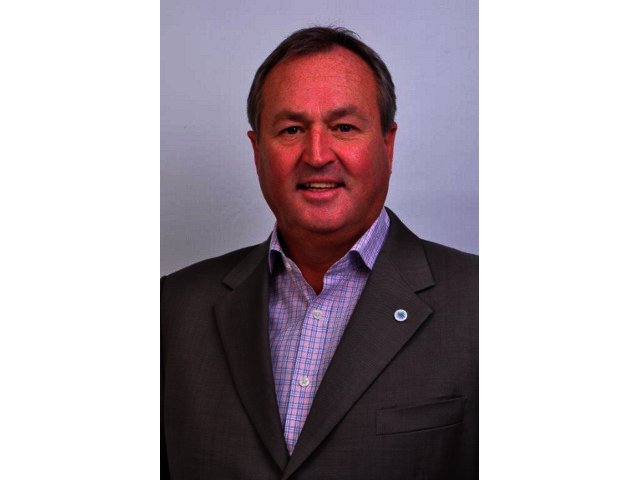By Philip Gregory, Senior Regional Executive: Johnson Controls GWS, Middle East & Africa
Workplace change can be hard for the most loyal of employees. However, it’s clear that both our workplaces - and our mind sets around how we work - need to continually evolve to align with dynamic business needs and technology developments. This can make for uncomfortable situations for employees such as a change of office location, a move to desk-sharing and/or the introduction of new technologies or work practices.
The key challenge for those managing workplace change is how to engage, motivate and inspire a workforce who may be apprehensive, cynical or resistant. Here are seven steps to overcome resistance to workplace change.
1. Recognise that resistance is good: It shows people are taking notice and listening
While people might not like what they hear and react in a negative manner, it’s positive that they are not ignoring change or in denial. This is an important first step on the change journey.
A considered response to resistance can convert negative emotion into positive energy and new thinking. Resistance also provides important feedback to help validate you’re changing the right things.
Be aware that resistance is not always obvious, it can be passive as well as active. Passive resistance is harder to identify as people sometimes hide their true feelings – for example, when they’re uncomfortable challenging you face-to-face, or in a group situation. Whichever situation you may find yourself in, don’t be surprised or de-railed: anticipate and plan for resistance.
2. Secure credible senior sponsors: link workplace changes to wider business goals
The ability to articulate how the workplace influences organisational goals helps secure the broader senior-level attention and the support a change program needs to succeed.
3. Identify where the strongest influence lies: Workforce analysis pays off Analysis helps you recognise the positive influencers you can nurture into a network of helpers and change champions; identify the negative people you can’t afford to ignore and put their concerns in perspective.
Generally speaking, you can positively influence 75 percent of the population by focusing on just 25 percent.
If you have a small enough workforce - say, 20 people - you can put names in the boxes and make strategic choices around who to talk to about what. Remember, champions and role models are not necessarily always senior figures in the organisation: sometimes your most powerful champions are ex-resistors.
4. Communication breeds engagement: Help employees understand the rationale for change
Successful change is not necessarily about employees getting what they want, rather persuading them to want what they get. Helping employees understand the rationale - how changes impact and benefit them - is key to securing their acceptance, and ultimately ownership, of change. There will be a spectrum of perspectives, concerns and interests among the workforce, as well as preferences around how information is provided.
You need to carefully time and plan communications, using a range of creative methods and media to engage people at the right time. It’s worth remembering how we handle and manage change outside work and applying similar common sense principles to the workplace scenario.
One of the best ways to tackle resistance to change is to simply talk to people about it – face-to-face communication should always be a key component of any program. In addition, introducing change in measured doses - even creating a sense of fun and excitement - can go a long way to grabbing attention in a busy world.
5. Do your homework: Make your change program appropriate and relevant
You wouldn’t expect a doctor to prescribe a cure without initial investigation – the same principles apply to change management.
Make sure you understand the full context of change and mood of the workforce before implementing your change program. There may, for example, be important history such as previously failed change projects or recent redundancy announcements you need to take into account before deciding on an approach.
Your homework, or pre-work, can also help establish valuable benchmarks - like levels of awareness and appetite for change – to measure progress and success. Use it as an opportunity to check the desired change and timeframe is realistic. Better to adjust programs at the outset than about turn mid-way.
6. Create a structured and flexible change and communications program: Pace the delivery of information
Ensure your communication, preparation and support activities recognise employees’ change journey. Create content that engages and involves them in ways that allow them to help shape the future of their workplace - this will increase their investment in its transformation.
Be prepared to listen and adapt the change program as you go. This may mean doing more, less or even different actions – the last thing you want is for people to feel patronised, isolated or ignored. For example, you might find an initial approach needs to focus more on the way people work and use their new working environment than the physical design of space.
7. Don’t forget the aftercare: Follow-up is a vital component of a successful change program
The most critical change period is immediately after implementation, when behaviours and ways of working can easily slip back to where they started, especially if there are teething problems.
Aftercare is too often forgotten and/ or unplanned for. It calls for much more than a traditional six month post-occupancy review and should include immediate, informal review and support activities. It doesn’t make sense to wait six months to discover an issue that could have easily been resolved within weeks or, conversely, an opportunity or good practice that could have been shared and nurtured early on.
The key takeaway from this feature is to view change as a journey, not a destination. In the world of work, the adage that “change is constant” has never been truer. It is this mindset that will see resistance to change a thing of the past.





